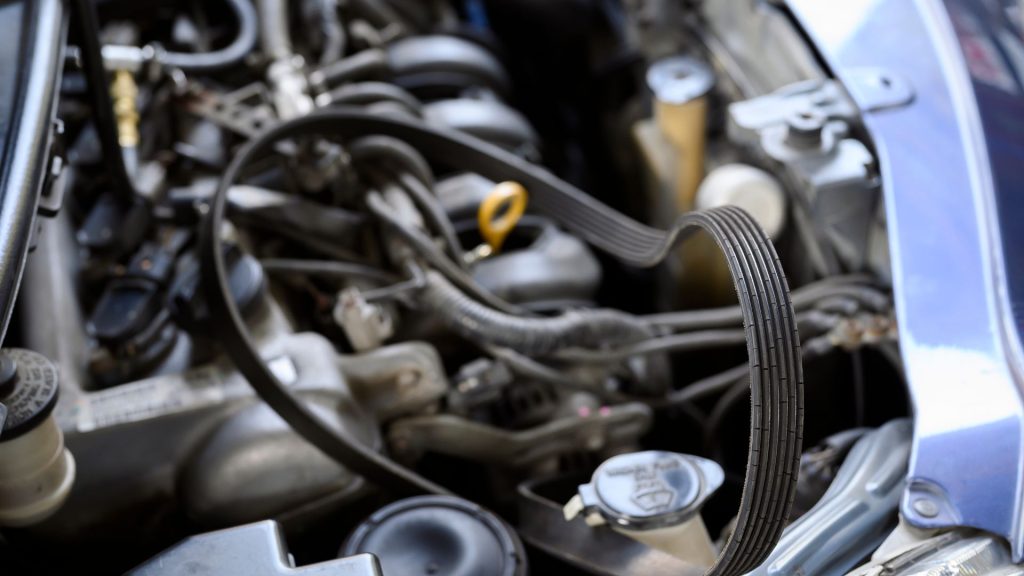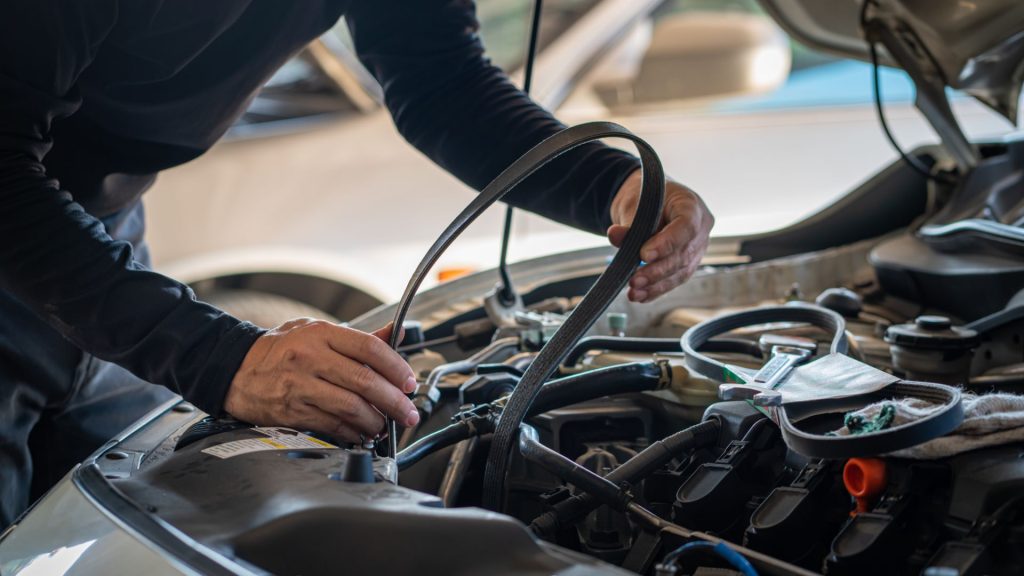Bad serpentine belt signs — causes and fixes
Identify the signs of a bad serpentine belt that should not be ignored.

A variety of problems could arise in a vehicle when it is left unobserved or used aggressively. One such problem is a bad serpentine belt. When a serpentine belt goes bad, there are signs it gives off to notify the driver that there is something off about the vehicle. Some signs of a bad serpentine belt include cracks on the belt, loss of air-conditioning, engine overheating, dimmed headlights, and warning signs on the dashboard.
In this article, we take an in-depth look at the signs of a bad serpentine belt, the causes or reasons why your serpentine belt goes bad, and also some critical steps to take to ensure that you can correct and avert cases of the bad serpentine belt.
Signs that your serpentine belt is bad

Drivers shouldn’t wait until they notice signs of irregularities in their vehicles before they have them serviced. Regularly expecting your vehicle is an excellent way of preventing and correcting problems that may arise in the long run. Some signs that your serpentine belt is faulty include;
Cracks on the belt
A noticeable sign for drivers who regularly observe and inspect their vehicles for signs of irregularity is a crack on the serpentine belt. Cracks may develop on your serpentine belt over time as all car parts are subject to wear and tear. Also, the damages could be a result of poor quality serpentine belts. When you notice cracks on your serpentine belt, it is time to have them replaced, as driving around with a faulty serpentine belt can endanger your vehicle.
Noises from the front of the vehicle
When you hear squealing noises from the front of your vehicle, it could mean that your serpentine belt is faulty. The noises emanate when the car is carrying out tasks that consume much power. Squealing noises from the front of the car also means that the belt may have slipped off its position and needs realignment. Simply consulting a professional mechanic will have this problem solved in no time.
Engine goes off abruptly
The rotating motion of the serpentine belt is a contributor to the charging of the alternator. When the serpentine belt is bad or gets misaligned, power will not flow to the battery, and this can cause the engine to go off abruptly. Charging the battery externally and replacing it in the vehicle would still result in the machine going off because the alternator affected by the serpentine belt rotation is not getting power to charge the battery.
Flapping sound from the engine bay
A loose serpentine belt does not have sufficient contact with the engine parts, and this causes a flapping sound to emanate from the engine bay. The sound gets amplified as you step on the accelerator. Adjusting the serpentine belt is a great way to fix this problem, but you will need a new serpentine belt in cases where the belt has worn out.
Engine overheats
Just like the alternator, the vehicle’s water pump is also affected by the rotation of the serpentine belt. In cases where the serpentine belt gets misaligned, the water pump will cease to function, and this can cause the vehicle to overheat. Engine overheating can lead to severe damage to other parts of the car.
Power steering malfunction
When you notice that your power steering is proving difficult to control, it could mean that your serpentine belt is misaligned or snapped. In most cars, the serpentine belt powers the steering pump, and when the belt snaps or gets misaligned, it causes the power steering to malfunction. It is dangerous to have your power steering fail while driving as fatal accidents can occur from the problem.
Loss of air-conditioning
The serpentine belt also powers the air conditioning system; any damage or misalignment on the serpentine belt can alter the functioning of the air conditioning. In dry and hot seasons, driving without air conditioning can be very uncomfortable for the driver. When you notice that your air conditioning system has stopped working, it may be due to a bad serpentine belt. If the A/C clutch is not engaging, it could be due to a bad serpentine belt.
Flickering or dimmed headlights
A bad serpentine belt can cause the headlights to flicker or dim when the car moves at low speeds. The serpentine belt powers the alternator, and when it is faulty, the alternator cannot charge the battery; hence the light gets dim or flicker when you turn them on. In cases where the serpentine belt is severely damaged, the headlights may refuse to come on.
Warning lights appear on the dashboard.
You will notice warning lights on your dashboard when your serpentine belt is misaligned or damaged. The most notable among the warning lights is the battery light. The serpentine belt powers the alternator that charges the battery.
When the alternator is not charging the battery, the battery light will come on, indicating that the battery is not receiving power. Other warning lights that may appear on the dashboard include; the hydraulic pressure light and the power steering warning light.
What causes your serpentine belt to go bad

If you’re wondering what causes your serpentine belt to go bad, here are some common reasons;
Wear and tear over time
Every vehicle part is subject to wear and tear in the long run. Your serpentine belt may get impaired because of usage over time. Serpentine belts have limits like most parts of a vehicle, and when their limit is expired, they go bad or begin to malfunction. Replacing your serpentine belts with new ones from time to time aids the vehicle’s smooth operation.
Quality of the belt
A significant contributor to why your serpentine belt goes bad is dependent on the quality of the belt. Straps made of cheap material tend to wear out faster, and opting for a good quality belt can see you using them for a long time.
Oil leakage
Although not very common, oil leaks contribute to damaging the serpentine belt. When your vehicle leaks oil, the durability of a serpentine belt is compromised as the oil damages the material.
Faulty belt tensioner
All the belts in a vehicle use a tensioner that gives them a firm grip. When the belt tensioner is faulty, it causes a serpentine belt to slip, leaving the belt wearing faster than usual. To avoid this, ensure that the belt tensioner is functioning correctly and have them replaced if they are old.
How to replace a serpentine belt yourself

In the case of an emergency, you may want to replace your serpentine belt on your own. You can do this in a few simple steps.
- Purchase the correct belt size for your vehicle. Serpentine belts vary on different car makes and models.
- Get the right tools to help you assess the serpentine belt. You will need a car jack and wrench fit for the tensioner pulley.
- Use the wrench to turn the tensioner pulley. Turning the tensioner wheel loosens the serpentine belt from around the other pulleys.
- When the belt is loose, please remove it from the engine and replace it with a new belt.
- Ensure the new belt is properly aligned around the pulleys to avoid slipping and sliding.
- Tighten the tensioner pulleys after installing the new belt to hold the belt in place.
- Turn on the vehicle and check that the belt is functioning correctly.
By following these steps, you can have your serpentine belt replaced. However, in cases where there isn’t an emergency, it is preferable to consult a professional mechanic.
How long should a serpentine belt last
Naturally, a company-installed serpentine belt should last from 30,000 to 100,000 miles. However, for replacements, the durability of a serpentine belt is dependent on the quality of the belt. It is vital to note that oil leaks, faulty belt tensioners, and regular wear and tear factors may affect your serpentine belt’s durability.
Opt for suitable quality belts to enjoy a long-lasting serpentine belt, check your vehicle for cracks and damages that could lead to oil leaks, and replace old belt tensioners.
Replacement cost for serpentine belt
The cost of replacing a serpentine belt is dependent on the quality of the belt, and it also depends on the model, year, and make of your vehicle. If you are not doing it yourself and choose to employ labor, there would also be a price change.
However, employing the services of an auto mechanic to change or replace your serpentine belt should cost between $100 to $200.
Our take
The serpentine belt is a vital part of a vehicle, and damage to the serpentine belt can malfunction other parts of your car. Carrying out regular checks and inspections on your vehicle will help you spot a bad serpentine belt and have it replaced immediately. In cases where you can’t handle the replacement on your own, you must employ the services of professionals to avoid destruction to other parts of the vehicle.
How do you know if your serpentine belt is going bad?
You can tell your serpentine belt is going bad through signs like cracks on the belt, overheating engine, battery failure, etc.
Can a bad serpentine belt cause loss of power?
A bad serpentine belt can cause a loss of power because the serpentine belt powers the alternator that charges the battery.
How do I test my serpentine belt?
You can test your serpentine belt by checking the tension. If it is loose, you either have a faulty belt tensioner, or your serpentine belt needs replacement.
What noise does a bad serpentine belt make?
A bad serpentine belt makes squealing or flapping sounds in the engine bay due to misalignment or severe damage.